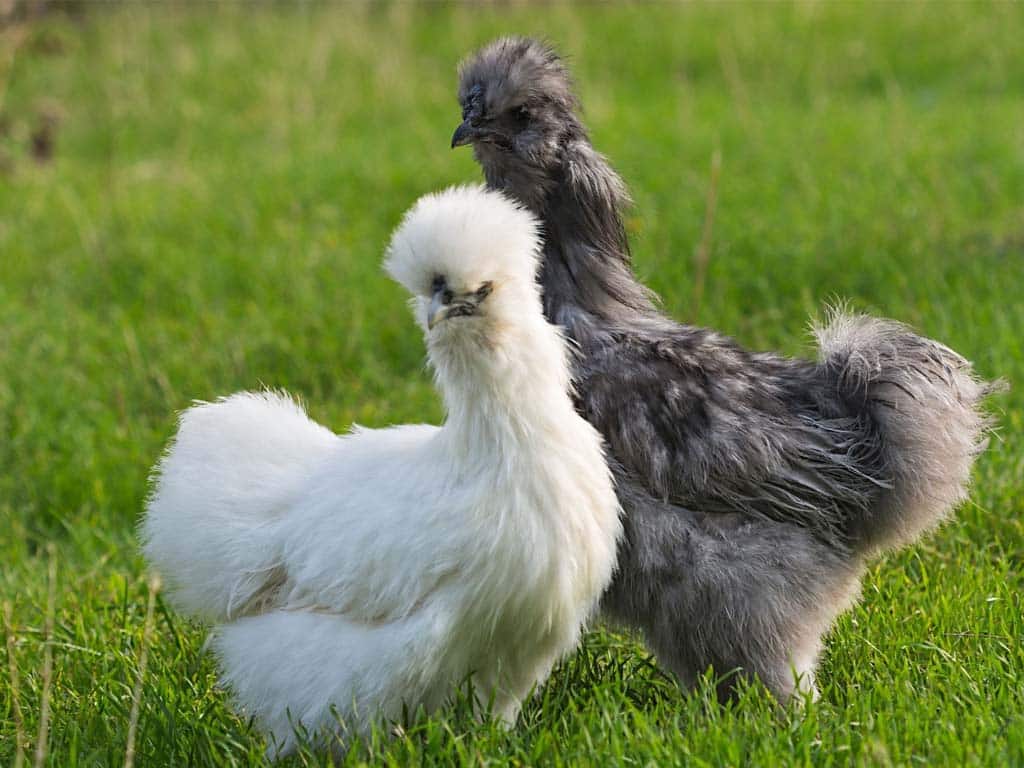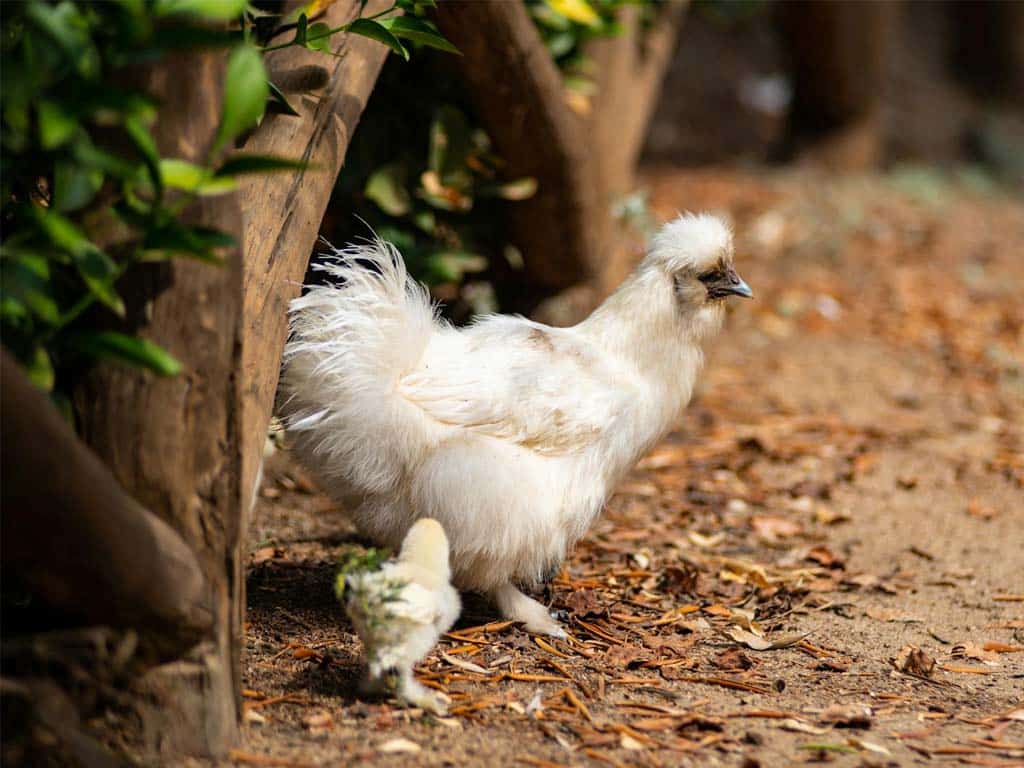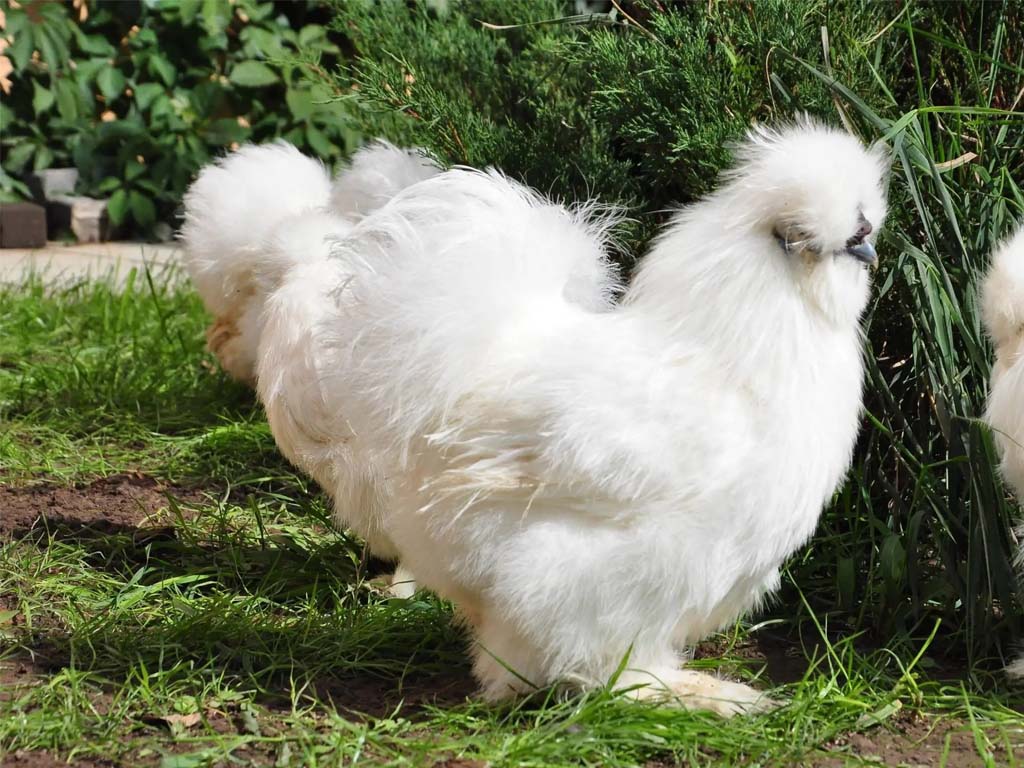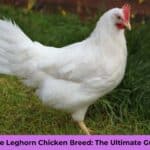When it comes to unique and captivating chicken breeds, few can match the charm and allure of the Silkie chicken breed.
These feathered wonders have been turning heads and winning hearts for centuries, and it’s not hard to see why.
With their silk-like plumage, striking appearance, and gentle temperament, Silkies have earned a special place in the world of poultry enthusiasts and backyard chicken keepers alike.
In this comprehensive guide, we’ll dive deep into the world of Silkie chickens, exploring their fascinating history, distinctive characteristics, care requirements, and much more.
Whether you’re a seasoned chicken keeper or just considering adding these fluffy friends to your flock, this article will provide you with all the information you need to understand and appreciate these remarkable birds.
The Silkie Chicken Breed’s Storied Past
The history of the Silkie chicken is as intriguing as their appearance. These birds have ancient roots that can be traced back to Asia, with their origins believed to lie in China, Japan, and India. The first documented mention of Silkies dates back to 770 AD, but it was Marco Polo who brought them to wider attention in the West during his travels in the 1300s.
“It is said that Marco Polo described Silkies as ‘furry chickens’ in his travelogues, marveling at their hair-like feathers and black skin.”
This description sparked curiosity and fascination among Europeans, who had never seen such unusual birds before. As trade routes expanded, Silkies made their way westward, gradually becoming more common in Europe and eventually reaching the Americas.
The American Poultry Association officially recognized the Silkie chicken as a standard breed in 1874, cementing its status as a distinct and valuable addition to the poultry world. Since then, Silkies have continued to grow in popularity, cherished for their unique appearance, docile nature, and versatility as both show birds and backyard pets.
Unmistakable Appearance: The Silkie Chicken Breed’s Claim to Fame
The most striking feature of the Silkie chicken is, undoubtedly, their extraordinary plumage. Unlike the smooth, overlapping feathers of most chicken breeds, Silkies sport a fluffy, hair-like plumage that feels silky to the touch. This unique texture is due to a lack of barbicels, the tiny hooks that typically hold feather barbs together.
But the Silkie’s unusual attributes don’t stop at their feathers. Here are some other distinctive physical characteristics that set them apart:
- Black skin and bones: Beneath their fluffy exterior, Silkies have black or dark blue skin, and even their bones and internal organs are dark-colored. This genetic quirk, known as fibromelanosis, is rare in the poultry world and adds to the Silkie’s mystique.
- Five toes: While most chickens have four toes on each foot, Silkies are polydactyl, boasting an extra toe on each foot. This fifth toe is typically smaller and raised slightly above the others.
- Turquoise earlobes: In contrast to their dark skin, Silkies sport bright turquoise-blue earlobes, adding a pop of unexpected color to their appearance.
- Walnut comb: Silkies have a distinctive walnut comb, which is dark mulberry or black in color. This compact, lumpy comb sits atop their heads like a small crown.

Silkie Chicken Breed Color Varieties
Silkies come in a rainbow of colors, each as stunning as the next. The American Poultry Association recognizes several standard color varieties:
| Color Variety | Description |
|---|---|
| White | Pure white plumage |
| Black | Solid black feathers with a greenish sheen |
| Blue | Soft, slate-blue feathers |
| Buff | Warm, golden-brown coloration |
| Partridge | Complex pattern of black, red, and gold |
| Splash | Mottled mix of white and blue feathers |
In addition to these standard colors, Silkies can also be found in other variations such as red, lavender, and cuckoo patterns. Each color variety has its own unique charm, allowing chicken enthusiasts to choose the perfect Silkie to suit their preferences.
The Silkie Chicken Breed: By the Numbers
Understanding the physical characteristics and capabilities of the Silkie chicken breed can help you better care for these unique birds. Let’s break down some key numbers:

Size and Weight
Silkies are generally considered a bantam breed, meaning they’re smaller than standard-sized chickens. However, there are also standard-sized Silkies, though they’re less common. Here’s a quick breakdown of typical Silkie weights:
- Roosters: Approximately 4 pounds (1.8 kg)
- Hens: Around 3 pounds (1.4 kg)
Despite their fluffy appearance, which can make them look larger, Silkies are relatively lightweight birds.
Check this out Are Penguins Friendly Or Are Penguins Dangerous?
Lifespan
With proper care, Silkie chickens can be long-lived companions. The average lifespan of a Silkie chicken is:
- Typical lifespan: 7 to 9 years
- Optimal conditions: Up to 12 to 13 years
Factors such as diet, housing, and overall health care can significantly impact a Silkie’s longevity.
Egg Production
While Silkies are not primarily known for their egg-laying capabilities, they do produce eggs regularly. Here’s what you can expect:
- Egg color: Small, cream-colored eggs
- Production rate: 2-3 small eggs per week
- Annual production: Approximately 100-120 eggs per year
- Laying age: Hens typically start laying at 28-36 weeks old
It’s important to note that Silkie hens are often broody, meaning they have a strong instinct to sit on and hatch eggs. This broodiness can interrupt their laying cycle, resulting in fewer eggs overall compared to some other breeds.
Behavior: Personality in a Feathered Package
One of the most endearing aspects of the Silkie chicken breed is their delightful temperament. These birds are renowned for their gentle and friendly nature, making them excellent pets and a joy to have in any flock.
Check this out How and Where Do Geese Sleep? The Secrets of Goose Slumber
Temperament Traits
- Docile and calm: Silkies are known for their laid-back demeanor, rarely showing aggression towards humans or other chickens.
- Affectionate: Many Silkie owners report that their birds enjoy being held and petted, often seeking out human interaction.
- Curious: Despite their calm nature, Silkies are inquisitive birds that enjoy exploring their surroundings.
- Good with children: Their gentle nature makes Silkies an excellent choice for families with young children.
“Silkies are the teddy bears of the chicken world – soft, cuddly, and always ready for a gentle snuggle.”

Broodiness in the Silkie Chicken Breed: The Ultimate Mother Hens
One of the most notable behavioral traits of Silkie hens is their strong tendency towards broodiness. This means they have a powerful instinct to sit on eggs and hatch chicks, even if the eggs aren’t their own. This trait makes Silkies excellent surrogate mothers for other chicken breeds or even other poultry species like ducks or quail.
While broodiness can be a desirable trait for those interested in hatching chicks, it can also present challenges:
- Broody hens may neglect their own health, rarely leaving the nest to eat or drink.
- Egg production decreases during broody periods.
- Repeated broodiness can be stressful for the hen.
Managing broodiness in Silkies often requires careful attention and sometimes intervention to ensure the hen’s well-being.
Check this out Why Do Crows Chase Hawks? Do Crows Hate Hawks?
Flock Dynamics
In a mixed flock, Silkies often find themselves at the bottom of the pecking order due to their docile nature. However, their gentle temperament usually means they get along well with other breeds. When keeping Silkies, consider the following:
- Provide enough space and resources to prevent bullying by more aggressive breeds.
- Ensure Silkies have safe spaces to retreat if needed.
- Monitor interactions, especially when introducing new birds to the flock.
Noise Levels
For those concerned about noise, the Silkie chicken breed is generally considered quiet. While hens may softly cluck and coo, they’re not known for loud or frequent vocalizations. Roosters, as with all chicken breeds, will crow, but Silkie roosters are often described as having a softer, less piercing crow compared to other breeds.

Caring for Your Flock
Proper care is essential for keeping your Silkie chickens healthy, happy, and looking their fluffy best. Here’s what you need to know about housing, feeding, and grooming these unique birds.
Housing Requirements
While Silkies are relatively small, they still need adequate space to thrive. Here are the basic space requirements:
- Coop space: At least 2-3 square feet per bird
- Run space: 8-10 square feet per bird
Remember, these are minimum requirements. More space is always better, allowing your Silkies to exhibit natural behaviors and reducing stress.
Other housing considerations include:
- Roosting bars: Place roosting bars lower to the ground, as Silkies are not strong flyers.
- Nesting boxes: Provide cozy, private nesting areas for hens.
- Ventilation: Ensure good airflow to prevent moisture buildup, which can be problematic for Silkies’ fluffy feathers.
- Protection: Secure housing against predators, as Silkies’ poor flying abilities make them vulnerable.
Check this out 24 Yellow Birds In Ohio With Photos
Feeding Essentials
A balanced diet is crucial for maintaining the health and vibrant appearance of your Silkie chickens. Here’s a basic feeding guide:
- Commercial feed: Choose a high-quality layer feed appropriate for Silkies’ age and life stage.
- Protein supplements: Offer occasional treats like mealworms or scrambled eggs to boost protein intake.
- Grit: Provide insoluble grit to aid in digestion.
- Calcium: Offer crushed oyster shells or other calcium supplements, especially for laying hens.
- Fresh water: Always ensure clean, fresh water is available.
Grooming Needs
The Silkie’s unique feathering requires special attention to keep them looking their best:
- Regular bathing: Occasional gentle baths can help keep their fluffy feathers clean and in good condition.
- Drying: Thoroughly dry Silkies after bathing to prevent chilling.
- Feather care: Gently brush or comb their feathers to prevent matting.
- Parasite prevention: Regular checks and preventative measures for lice and mites are crucial.
Health Concerns
While the Silkie chicken breed is generally hardy, they do have some specific health considerations to keep in mind:
- Marek’s Disease: Silkies can be particularly susceptible to this viral infection. Vaccination is crucial.
- Respiratory issues: Their fluffy head feathers can make them prone to eye and respiratory infections in damp conditions.
- Frostbite: Despite being cold-hardy, their comb and toes can be susceptible to frostbite in extreme cold.
- Heat stress: Their dense plumage can make them prone to overheating in hot weather.
- Parasites: Regular checks for external parasites like mites and lice are essential.
Preventative care is key to maintaining your Silkies’ health. Regular health checks, a clean environment, and prompt attention to any signs of illness can help ensure your fluffy friends stay in top condition.
Breeding: Perpetuating the Fluff
For those interested in breeding Silkies, understanding the genetics behind their unique traits is crucial. Here are some key points to consider:
- The gene for silky feathering is recessive, meaning both parents must carry the gene for offspring to have the characteristic fluffy plumage.
- Breeding for specific color varieties requires knowledge of color genetics in chickens.
- Responsible breeding practices are essential to maintain the health and quality of the breed.
When breeding Silkies, it’s important to select for good health, temperament, and adherence to breed standards. Always prioritize the well-being of your birds over aesthetic considerations.
Check this out Finches In Florida – The Complete Guide To Florida Finches
The Silkie Chicken Breed Beyond the Backyard
While Silkies are beloved as backyard pets, their unique qualities have led to several interesting uses beyond the typical chicken coop:
- Show birds: Silkies are popular in poultry shows, where their unusual appearance and variety of color morphs make them stand out.
- Therapy animals: Their gentle nature and soft feathers make Silkies excellent therapy animals in various settings.
- Culinary delicacy: In some Asian cultures, black-skinned Silkies are prized for their meat, which is believed to have medicinal properties.
Is the Silkie Chicken Right for You?
Before adding Silkies to your flock or starting your chicken-keeping journey with these fluffy friends, consider the following pros and cons:
Pros:
- Gentle, friendly temperament
- Unique and attractive appearance
- Good for families with children
- Excellent broody hens for hatching eggs
Cons:
- Lower egg production compared to some breeds
- Require extra grooming and care
- Can be at the bottom of the pecking order in mixed flocks
- Not ideal for meat production due to small size
Silkies thrive in environments where they can receive regular attention and care. They’re ideal for:
- Backyard chicken keepers looking for pet-like chickens
- Families wanting a gentle breed safe around children
- Those interested in hatching and raising chicks
- Poultry enthusiasts looking for a unique show bird
Conclusion:
From their ancient origins on the Silk Road to modern-day backyards around the world, the Silkie chicken has captivated people with their unique appearance and charming personalities. These fluffy marvels offer a blend of beauty, gentleness, and intrigue that few other chicken breeds can match.
Whether you’re drawn to their soft, silky feathers, their calm demeanor, or their potential as show birds or brood mothers, Silkies have something to offer every chicken enthusiast. With proper care and attention, these remarkable birds can be wonderful additions to your flock, providing years of joy, entertainment, and fluffy companionship.
As you embark on your Silkie chicken adventure, remember that each bird is an individual with its own personality and needs. Embrace the quirks and charms of these extraordinary chickens, and you’ll find yourself with a flock of feathered friends that are truly one-of-a-kind.







